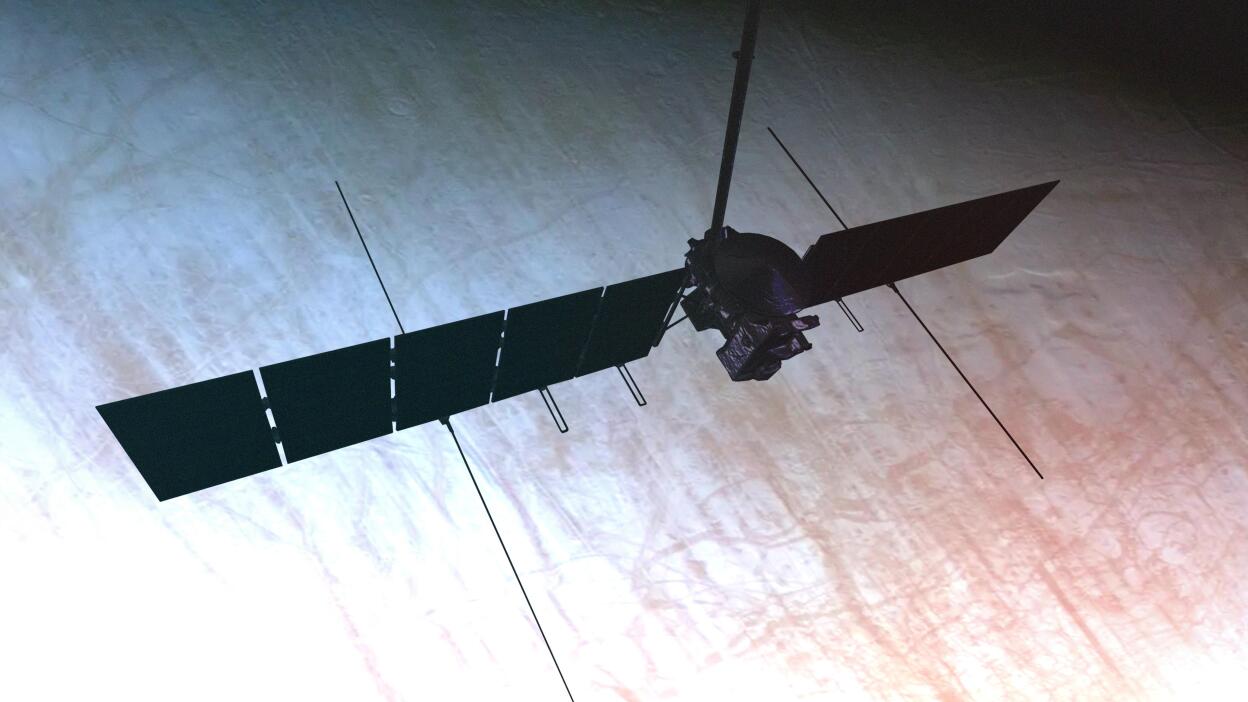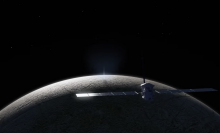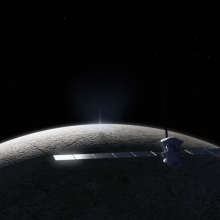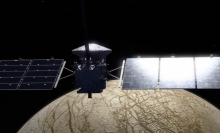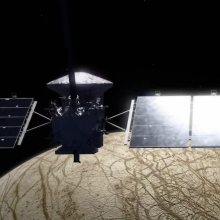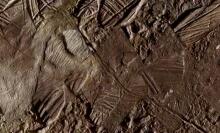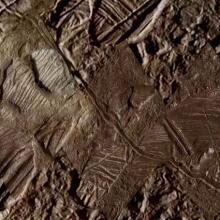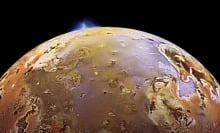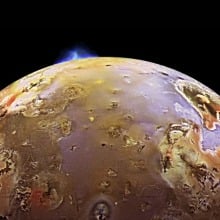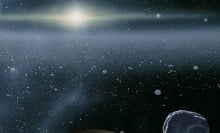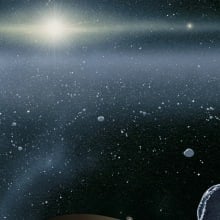NASA's Europa Clipper spacecraft is in for a wild ride.
The launch of this mission to explore the ocean world Europa — a Jupiter moon that harbors an ocean perhaps twice the volume of all Earth's seas — was interrupted by the imposing Hurricane Milton, but its 1.8-billion-mile journey is imminent. The craft will make nearly 50 close flybys of Europa's cracked, icy shell, using a number of high-resolution cameras, a ground-penetrating radar, and even a device that will literally sample particles of Europa that have been ejected into space by tiny meteorites.
The mission will gather copious amounts of information, enough to discern whether or not Europa harbors conditions that could host life beneath its ice shell.
"It's perhaps one of the best places beyond Earth to look for life in our solar system," Cynthia Phillips, a NASA planetary geologist and project staff scientist for the space agency's Europa Clipper mission, told Mashable.
The repeated reconnaissance will require the craft to make perfectly timed loops around Jupiter as it intersects Europa's orbit, which NASA shows in the animation below.
Here's what you're watching (a short ad plays first):
- Center orange dot: Jupiter
- Blue dot: Europa
- Gray, red, and yellow dots: Respectively Jupiter's other three large moons — Io, Ganymede, and Callisto
- Magenta: That's Europa Clipper "lopping in and out," NASA explained.
There's also a timestamp on the top right showing the mission's planned flight between April and July 2032.
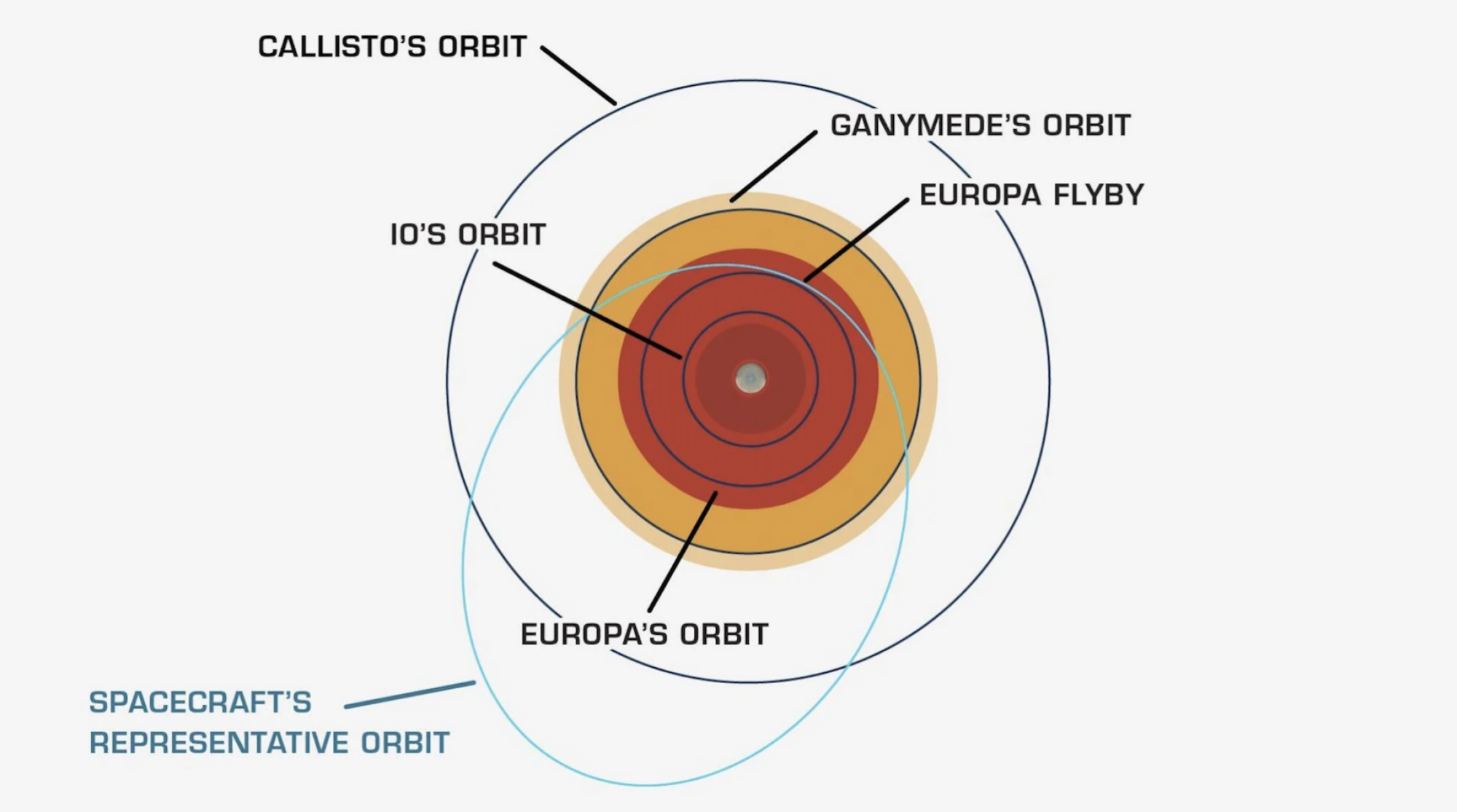
This looping trajectory is also designed to limit the spacecraft's exposure to extreme radiation. "The charged particle environment at Europa's location is immense," Phillips said.
That's because Jupiter, a gas giant planet 317 times more massive than Earth, generates a massive magnetic field shooting out between 600,000 to 2 million miles (1 to 3 million kilometers) toward the sun. It's created by the planet's liquid metal core, which spins and creates electrical currents (moving electric charges make magnetic fields). Crucially, this magnetic field grabs and then accelerates particles from the relentless solar wind — a stream of rapidly traveling charged particles emitted by the sun — which creates potent radiation belts around Jupiter, as depicted above.
"You get out of there."
(Decades ago, during the Voyager mission, NASA's engineers were worried about the craft passing by Jupiter. A person hypothetically riding aboard Voyager as it passed Jupiter would have gotten hit with a radiation dose 1,000 times the lethal level.)
Not all of Europa Clipper's electronics and software can be housed in a metal vault, so looping by the moon for relatively brief periods will limit impacts from charged particles, which can damage computer chips and electronics. During each orbit around Jupiter, the craft will spend under a day in an irradiated zone before swooping out. It won't return for between two to three weeks.
"You get out of there," Phillips said.
Tweet may have been deleted
After journeying through the solar system, the craft is expected to reach Jupiter in 2030, and soon after begin its orbital dance through the Jovian system. If it appears habitable, NASA plans to return to Europa and land a robot on the icy crust. Such an endeavor would drill into the ice, looking to see if the moon is inhabited.
Topics NASA
